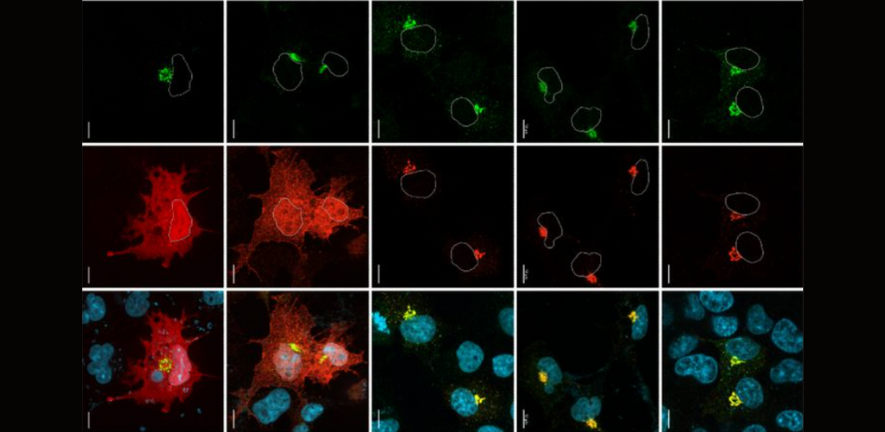
Submitted by Livia Harriman on Fri, 19/01/2024 - 08:41
The recent preprint from the Atomic Virology Lab presents a fascinating discovery about how viruses can impersonate cellular proteins to aid their replication.
The focus is on human cytomegalovirus (HCMV), a common virus that can cause severe disease in babies and people with weakened immune systems.
For instance, if a pregnant woman gets infected with HCMV, it can result in low birth weight, hearing loss, visual impairment, and varying degrees of intellectual disability.
The paper describes how HCMV cleverly recruits components of the cell’s machinery, known as the ESCRT system, to specific sites within infected cells. These sites act like construction yards where new virus particles are assembled and acquire their protective outer layer. The ESCRT system, which usually helps shape and remodel the cell membranes, is often co-opted by viruses to help them make new virus particles.
The researchers discovered that a viral protein, pUL71, brings a specific component of the ESCRT system, called VPS4A, to these virus assembly sites. They identified a particular part of pUL71 that is crucial for this interaction. Interestingly, this part of pUL71 closely resembles a motif found in some cellular components, suggesting that the virus deliberately mimics these components to recruit VPS4A.
However, the plot thickens. Even though VPS4A is recruited to the site, it doesn’t seem necessary for the virus to replicate or form new particles. So, the researchers are still trying to figure out why this interaction happens. But one thing is clear - this discovery of a new way that viruses use molecular mimicry could potentially open up new avenues for treating or preventing HCMV infections.
This work was performed in collaboration with the laboratory of Prof. Jens von Einem in Ulm University Medical Center, Germany.
Find out more about the Atomic Virology Lab here>>

